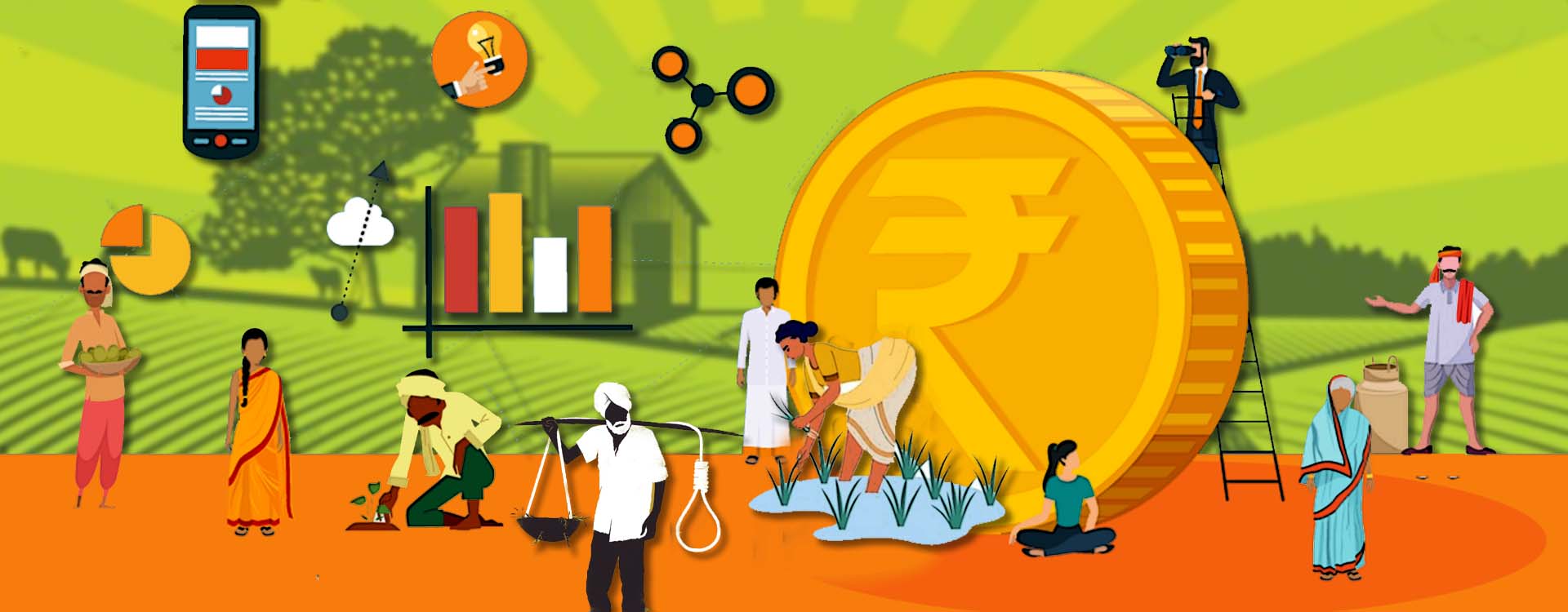Jai Kisan, a Mumbai-based Fintech start-up recently raised $30 M in a Series A funding round backed by new investors including Mirae Asset, Syngenta Ventures, alongside their existing investors including Blume, Arkam Ventures, NABVentures, Prophetic Ventures, and Better Capital.
What’s the market like?
The rural financial services market is riddled with commercial banks and lenders with single digital penetration that can’t even attempt to cover the population in millions, mostly comprising of farming communities. The existing players charge exorbitant interest which is not feasible for farmers. The consumers in the rural market neither have a credit score nor a documented credit history.
The financial services rural market is crucial for the Indian economy and the lack of credit for the Indian farming consumer speaks volumes on the poor state of affairs in the rural and farming ecosystem.
Jai Kisan received the maiden investment of NABARD’s investment arm.
NABARD, the National Bank for Agriculture & Rural Development was created to oversee agricultural credit in India and is also responsible for supervising rural and co-operative banks. NABARD extends financial support to state governments for the development of agriculture and its allied sectors. It’s also tasked with rural infrastructure development, financing Rural Financial Institutions (RFIs) and MSMEs. NABARD is relevant here because it made its maiden investment to Jain Kisan through its investment arm NABVENTURES Fund I, last year in June. Jai Kisan comes under Rural Financial Institutions (RFIs) and was hence eligible for the investment.
The Bharat Khata system
The ‘Bharat Khata System’ is Jai Kisan’s brainchild. It’s a unique financing system which facilitates access for cheap financing whether for individuals (mostly farmers) or rural MSMEs. It also solves a crucial problem pertaining to farmer credit. Farmers who manage to avail credit and loans whether from banks or through traditional money lending, fall into the debt trap. Mostly because these financial products are not tailored to the needs of farmers and come with high interest rates.
The consumers are also unaware of the right usage of credit, and it often gets wasted on non-agricultural pursuits. This leads to further deterioration of the consumer’s ability to payback which finally culminates in endless loan defaults.
The Bharat Khata system fixes this problem by ensuring that the credit or loan availed by the rural consumer is utilised exclusively for agri-inputs, equipment, and will lead to returns. The Bharat Khata system captured $380 M and above in annualised GTV (Gross Transaction Value) run rate across 25000+ storefronts at the end of the March 2021 financial year.
New approach to disrupt the rural financing industry
The biggest reason for the shortfall of rural credit and lending by traditional financial firms is a narrow perspective. Farmers form a sizeable portion of the rural population, and the biggest mistake done by these firms is to treat them as risky consumers rather than as business owners.
Jai Kisan is changing this perspective and paving the way for other financial institutions and fintech start-ups attempting to serve this sector. By approaching rural farming professionals as business owners, it becomes easier to offer customized financial services to them that serve both parties well.
This new approach has helped them in disrupting the rural financial industry by differentiating themselves.
‘‘
The ‘Bharat Khata System’ is Jai Kisan’s brainchild. It’s a unique financing system which facilitates access for cheap financing whether for individuals (mostly farmers) or rural MSMEs.
What’s in it for me?
For MSMEs and start-ups stepping into rural financing, it’s important to focus on the core customer credit needs. You also need to put capital to the best use taking cue from Jai Kisaan’s success. To disrupt any industry, you need to become a category leader (sell the most products/services for a particular category than competitors).
Fintech start-ups thinking of offering credit and lending products will need to rely on traditional banking and financial institutions and even investors to raise capital. Eventually, if your growth is steady and fast, you will be able to lend from your own pocket.




